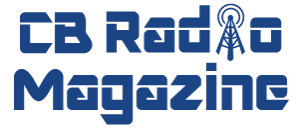10 codes, Q codes – where do they come from and why do we use them?
10 CODES
As a CB radio operator we all have heard and probably used terms such as “10-4 good buddy” or “what’s your 10-20”.
Even most people in America recognize “10-4” as the code for “ok, message received”. Every police, trucker, and CB movie for the last 50 years has used the term enough that you’ll even hear people use it in normal conversations or at work.
Although the exact origin of 10 Codes is not clear it seems that their use began with police departments in the 30’s and 40’s, becoming more popular in the 50’s. In the early days of police radio is was common for a police department to only have one police channel to share, making 10 codes important for keeping transmissions short and for providing simple effective communication.
Another source states that 10 codes were originally referred to as Ten Signals and they were first brought to the public by the APCO (Association of Public Safety Communication Officials) and sold to public safety departments.
What we do know for sure is that 10 codes are a great way of conveying information in a shortened and recognizable form. They are easy to remember (as long as you aren’t trying to remember all 200 of them) and each one has a specific meaning that can’t be confused when talking on the radio.
As a CB operator 10 codes should be part of your everyday repertoire. When someone asks “What’s your 10-20?” you should be able to easily recognize that the other party is asking about your current location. The 10 codes themselves have their own little quirks and have been shortened and changed for other purposes. You’ll often hear people ask “What’s your home 20?”, thus shortening the 10-20 code and also adding a pre-identifier to specify a location other than your current one.
Although there are roughly 200 codes in the the 10 code category you’ll probably only ever hear four different ones used regularly. They are as follows:
10-4 = Message received
10-7 = Out of service, leaving the air
10-9 = Repeat message
10-10 = Standing by
10-20 = My location is _____
Many people have asked about the source of the term 73’s. As far as we know the term originated back with telegraph operators and was one of many codes used by them. It originally meant “love and kisses” (I think a lot of radio operators would stop using it if they knew that) but it later was changed to mean “best regards” and it is widely used today by both CB and amateur radio operators.
Q CODES
Many CB operators are less familiar with Q codes as they are mostly only used in the SSB (single sideband) areas of CB radio. Q codes are effectively the same as 10 codes but are less “police terms” and are more specifically geared towards radio operation.
The origin of Q codes is also disputed. Some report that the term “CQ” was used as early as 1904 during radio operation between ships. Others quote the source of Q codes a being adopted by the International Radiotelegraphic Convention in 1912 and later becoming the standard for international radio operators.
As far as CB goes, Q codes are usually only used on SSB and often will be used during DX contacts. Just like 10 codes, there are really only a couple of Q codes that are used on a regular basis. They are as follows:
CQ – “Seek you.” General call.
CQ DX – Seek contact with any distant station(s).
QRO – Increase power.
QRP – Decrease power.
QRT – Stop sending/off the radio.
QSA – What is the signal strength?
QSL – Acknowledge receipt.
QSM – Repeat last message.
QSY – Switching frequencies.
QTH – Location.
QTR – Exact time.
